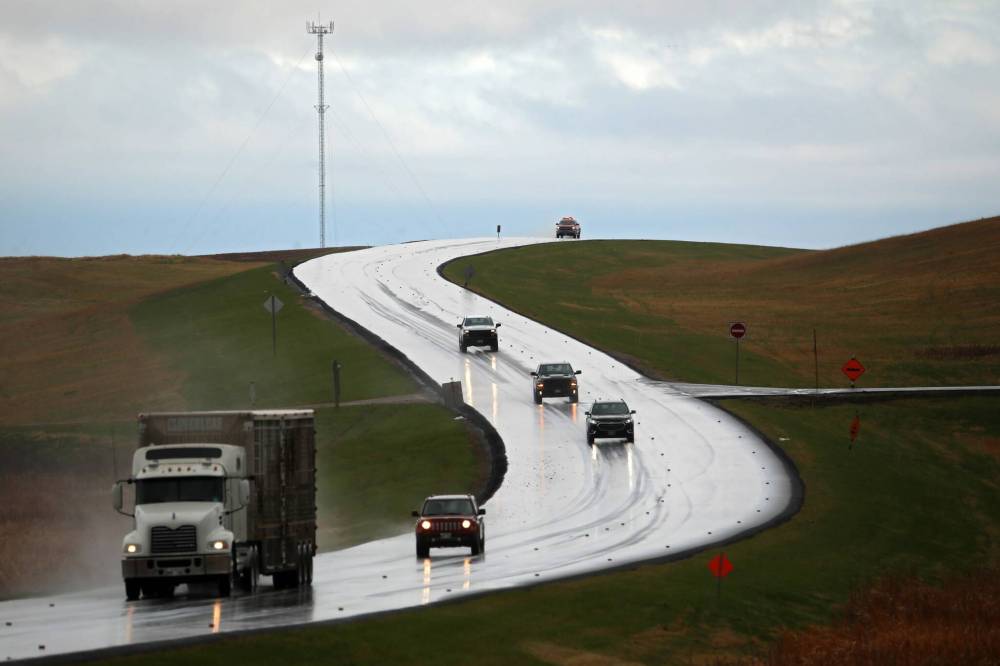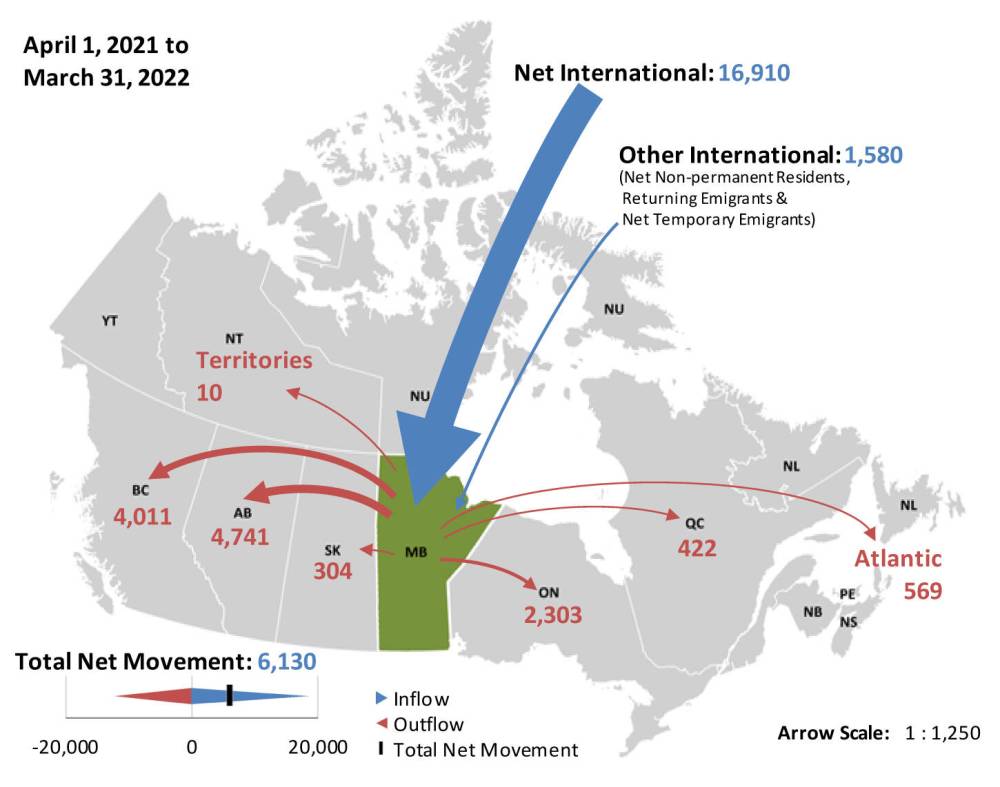Interprovincial exodus deserves attention
Read this article for free:
or
Already have an account? Log in here »
To continue reading, please subscribe:
Monthly Digital Subscription
$0 for the first 4 weeks*
- Enjoy unlimited reading on winnipegfreepress.com
- Read the E-Edition, our digital replica newspaper
- Access News Break, our award-winning app
- Play interactive puzzles
*No charge for 4 weeks then price increases to the regular rate of $19.00 plus GST every four weeks. Offer available to new and qualified returning subscribers only. Cancel any time.
Monthly Digital Subscription
$4.75/week*
- Enjoy unlimited reading on winnipegfreepress.com
- Read the E-Edition, our digital replica newspaper
- Access News Break, our award-winning app
- Play interactive puzzles
*Billed as $19 plus GST every four weeks. Cancel any time.
To continue reading, please subscribe:
Add Free Press access to your Brandon Sun subscription for only an additional
$1 for the first 4 weeks*
*Your next subscription payment will increase by $1.00 and you will be charged $16.99 plus GST for four weeks. After four weeks, your payment will increase to $23.99 plus GST every four weeks.
Read unlimited articles for free today:
or
Already have an account? Log in here »
Hey there, time traveller!
This article was published 28/07/2022 (1230 days ago), so information in it may no longer be current.
People are leaving Manitoba for other provinces in near-record numbers.
The province lost a net 12,360 people to the rest of Canada from April 1, 2021 to March 31 — the highest interprovincial loss in more than 40 years, according to the most recent figures from Statistics Canada.
The question is: why?
The net loss — difference between the number of people moving to Manitoba from other provinces and those leaving for other parts of Canada — is the highest since 1979-80, when the province recorded an interprovincial deficit of 13,178.
Last year’s exodus was double the average number over the previous 10 years.
Manitoba always loses more people to other provinces than it gains, at least in recent decades. It has traditionally relied on immigration, as well as natural increases (difference between births and deaths) to grow its population.
However, the bleeding to other provinces has been getting worse in recent years. It fell to lows of 2,392 in 2003-04 and 2,098 in 2009-10, but it’s grown since, climbing to about 5,000-7,000 in subsequent years, and hitting 8,838 in 2019-20, before the COVID-19 pandemic was declared.
It fell slightly to 7,745 in 2020-21, but has since soared to a new modern-day high.
So where is everyone going? Alberta and British Columbia, mostly.
Manitoba lost more than 4,000 people to each of those provinces last year on a net basis. Over 2,000 were lost to Ontario, 422 to Quebec, 304 to Saskatchewan, and 569 to the Atlantic provinces.
What the statistics don’t tell us is who is leaving and why. That would require more in-depth analysis by government or others, including the business community.
Conventional wisdom is most relocate for economic reasons: job and career opportunities. Some move for a desire to be with family or to settle in a more hospitable climate (such as B.C.), especially post-retirement.
The Manitoba government needs to know.
Granted, interprovincial migration numbers fluctuate from year to year. Maybe last year’s net loss was a blip. If it was, it was a big one. Still, the numbers have been trending in the wrong direction the past 10 years. Policy makers may want to figure out why to see if they can stem the tide.
Manitoba’s population is not at risk of contracting, thanks largely to record immigration. Net international migration has exceeded 10,000 most years since the mid-2000s.

The first year of the pandemic (2020-21) was the only time since 2006-07 net international migration fell below 10,000 (owing to strict travel restrictions across the world). It has since rebounded; Manitoba’s net immigration last year was one of the highest on record.
Still, Manitoba has lost a net 114,000 people over the past 20 years to other provinces, which should be cause for concern.
“Although Manitoba’s 12-month immigration levels are second-highest on record, net interprovincial outflows not seen since 1979-80 hamper growth,” the Manitoba Bureau of Statistics stated in its June 22 population report.
That should be setting off alarm bells for policy makers and employers, given the severe labour shortages all provinces now face. A lack of workers in most industries, skilled and unskilled, is one of the greatest economic challenges of the day.
The shortage is driven largely by an ageing population, as baby boomers exit the workforce. One of the key solutions is migration — both international and interprovincial.
There’s little doubt immigration will continue to grow at historically high levels in Manitoba. The problem is, interprovincial losses are cutting into those gains.
With natural increases also at a 20-year low (largely from a falling birth rate and excess deaths from COVID-19), it’s having an impact on the province’s overall population growth. Manitoba’s population grew 0.69 per cent over the past year (April 2021 to April), the second-lowest in 10 years. (Only the previous year, owing to the pandemic, was worse at 0.28 per cent.)
Manitoba’s annual population growth is normally well-above one per cent, and ranked between second- and fourth-highest among the provinces 2013-18. Its ranking has dropped steadily since then, falling to eighth in 2021-22.
It deserves some attention.
tom.brodbeck@freepress.mb.ca
Quarterly Demographic Estimates

Tom has been covering Manitoba politics since the early 1990s and joined the Winnipeg Free Press news team in 2019.
Our newsroom depends on a growing audience of readers to power our journalism. If you are not a paid reader, please consider becoming a subscriber.
Our newsroom depends on its audience of readers to power our journalism. Thank you for your support.







